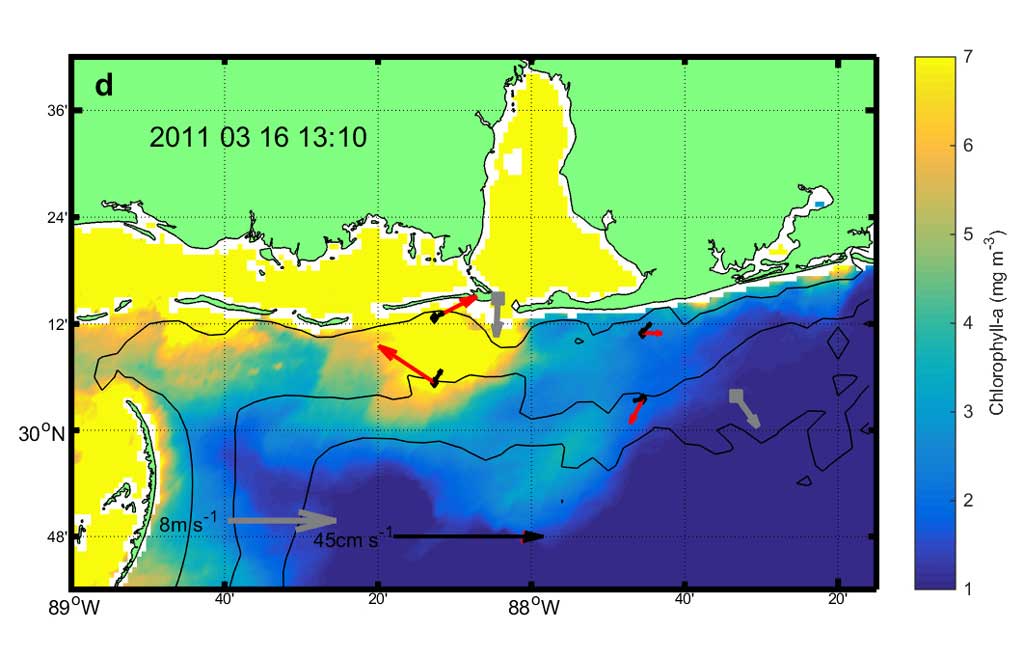GoMRI Consortium for oil spill exposure pathways in Coastal River-Dominated Ecosystems (CONCORDE)
Project Leader:JProject Leader: Monty Graham (University of Southern Mississippi)
Project Details
This project addresses how complex fine-scale structure and processes in coastal waters dominated by pulsed-river plumes control the exposure, impacts and ecosystem recovery from offshore oil spills. CONCORDE has been focused on understanding sub-surface modes of Oil Derived Substance transport and chemical change as it relates to organism exposure in coastal waters dominated by pulsed-river plumes.
A central component of this program is seasonal transects across the Mississippi Bight shelf with coupled biophysical measurements. This project represents an interdisciplinary, multi-institution research opportunity that is fostering new collaborations with institution across the U.S.
In the News:
Dzwonkowski et al. (2015), GoMRI - 06/14/2016 (http://gulfresearchinitiative.org/study-observes-mobile-bay-plume-dynamics-coastal-circulation/).
Dzwonkowski et al. (2017), ACER consortium - 6/19/2017 (http://acer.disl.org/news/2017/06/19/acer-concorde-collaboration-results-in-new-publication/)
Small Boat Updates on CONCORDE
Project Gallery
